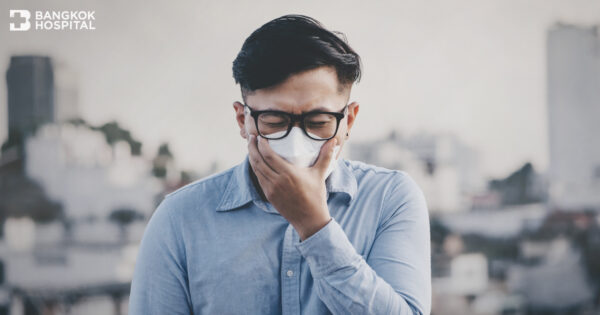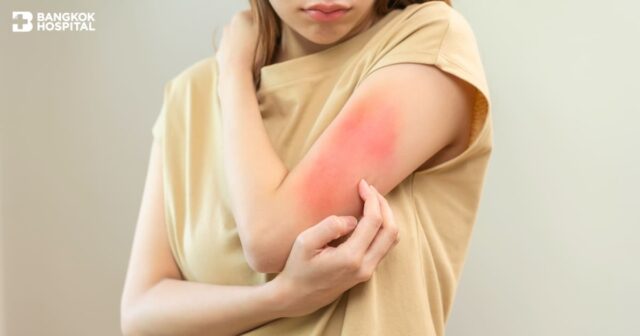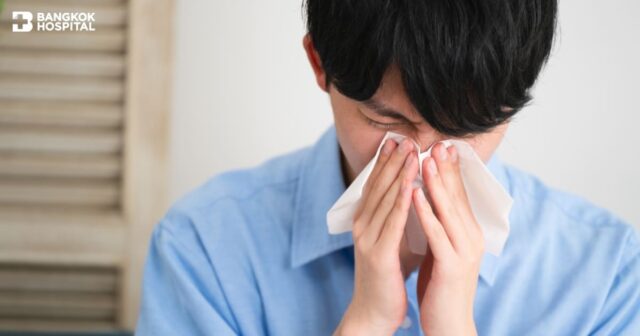PM 2.5 are polluted particles in the air that are extremely small. Once you inhale these particles deep into your bronchial tract, your trachea and alveoli (air sac) will become inflamed. This will be very harmful to your respiratory system, and even worsen the conditions in allergy patients.
PM 2.5 and Allergy
There is very much a correlation between PM 2.5 and allergy. This is because the inflammation process that involves both the upper and lower parts of the respiratory system causes an allergic reaction of the respiratory system as well as the skin. As you inhale the particles, the upper part of the respiratory system becomes first inflamed – for example, nasal allergy, sneezing, nasal mucus, blocked nose, and can spread further to cause sinusitis. Then, as the particles are sucked deeper, they cause inflammation of the lower respiratory system that includes the trachea and alveoli. So, PM 2.5 not only correlates to allergy, but it also relates to asthma. Interestingly, when the body receives more PM 2.5, it makes the patient more sensitive to the original allergies and become susceptible to additional new allergies too, which can lead to severe reaction to nasal allergic as well as asthmatic conditions.
PM 2.5 and the Danger to Allergic Conditions
PM 2.5 particles can cause 2 types of inflammation.
- Acute Inflammation – The conditions include sneezing, nasal mucus, blocked nose, itchy eyes, and runny nose. In asthmatic patients, they get more tired due to their bronchi being inflamed, leading to wheezing sounds as they breathe. For those who have not had asthma before or people who had the condition in their childhood but had been cured, the high density of PM 2.5 particles can actually stimulate asthma for them anew. In addition, the particles can affect skin allergies, causing rashes and hives.
- Chronic Inflammation – The patient’s nose has become blocked so unbearably – very painful in one or both nostrils, running yellow-greenish mucus. The sense of smell is reduced. These are symptoms of sinusitis or severe allergy. More importantly, when there is a chronic inflammation in the repository system, it can give rise to abnormal cells that turn cancerous – such as lung cancer, etc.
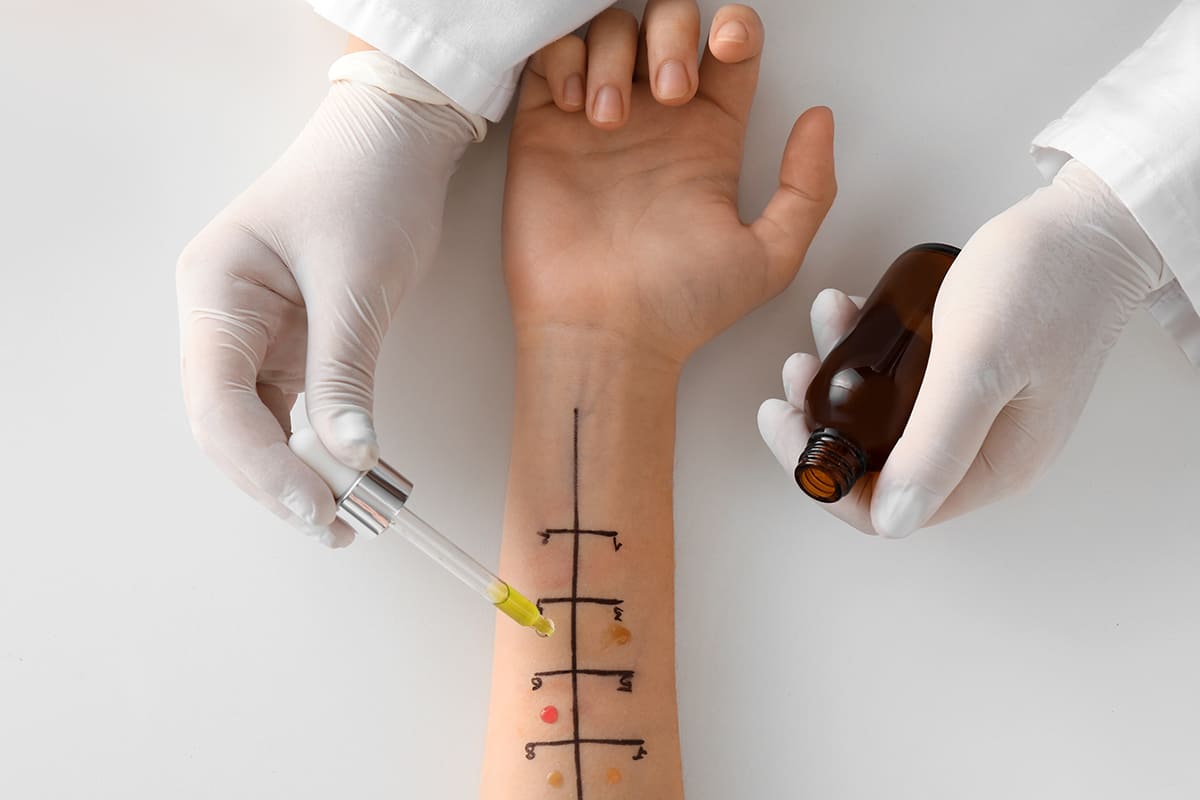
Procedure to Diagnose and Monitor Treatments for Respiratory Allergies
For respiratory allergies – such as nasal allergy, sinusitis, and asthma – the following procedures are utilized to determine the cause:
-
- Skin Prick Test. For the group of patients suffering from nasal allergy and asthma, the cause may have come from dust mites, cat or dog dander, cockroach hair, or even pollen from various flowers and grass. The doctor will apply small droplets of testing solution onto the patient’s forearm and gently prick the skin to let it absorb the solution. After 20 – 30 minutes, the result can be read. The advantage of this method is that the results are known immediately after the test. However, the patient mut stop taking allergy medicine 5 – 7 days prior to the test.
- Blood Test for Specific IgE: Blood is drawn to test for antibody in the bloodstream against specific source of allergy – such as dust mites, cat or dog dander, or various grass pollen. There is no need to stop allergy medicine, but the results will be available after 5 days.
- Spirometry Pre – and Post – Bronchodilator: This method is beneficial for patients who suffer from chronic coughs, chronic fatigue, bronchial stenosis, or wheezing as they breathe – possible conditions for asthma or other respiratory disorders. The test indicates severity of the patients’ conditions and can be utilized to monitor how well the patients’ lungs respond to the persistent application of medication.
- Exhaled Nitric Oxide: This method can determine the severity of the patient’s bronchial inflammation. It helps diagnose asthmatic condition and can be used to monitor the treatment also.
Treatments for Respiratory Allergy Patients
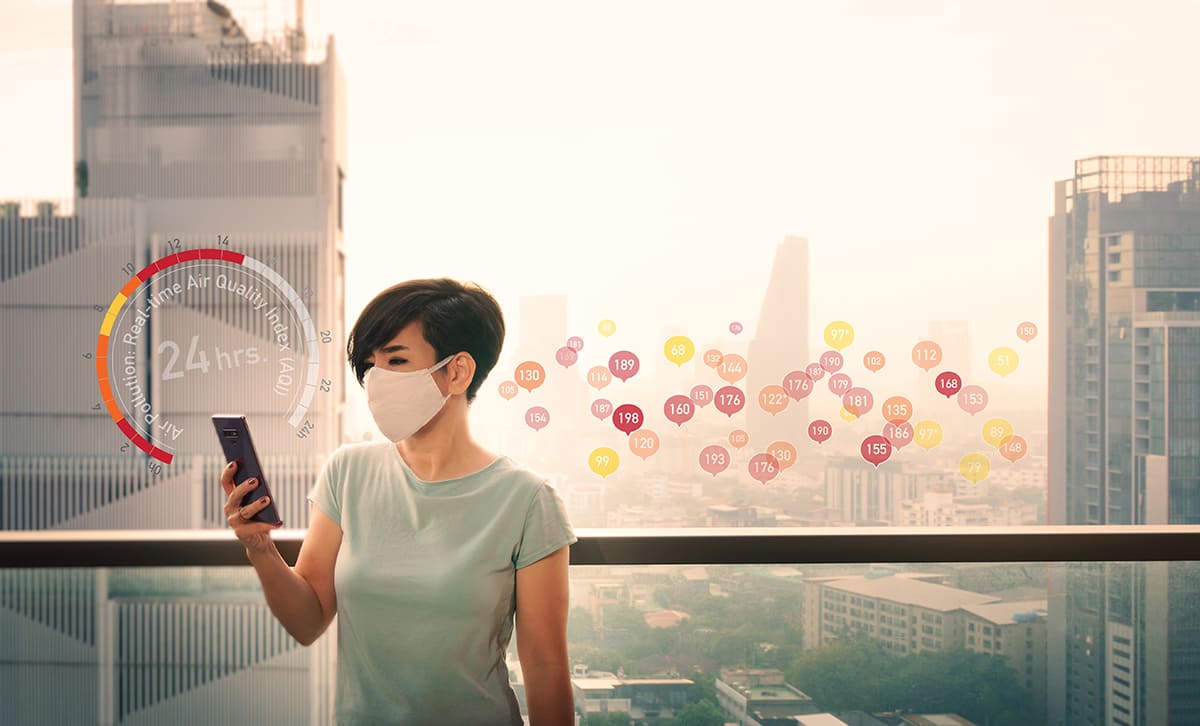
- Avoid Allergen. This is the best option. Once your allergy causing agents have been identified, you will learn to avoid them properly. These allergens include pollutions as well as PM 2.5. You will be able to prevent recurrence of the allergic reactions and avoid new allergies also.
- Persistent Use of Spray Medication.
- Nasal allergies or sinusitis – If the conditions are very severe, a persistent use of steroid nasal spray for a determined period is recommended to alleviate the swelling in the sinus and the blocked nasal passages that may also have caused facial discomfort. However, overextended use of the steroid spray is not advised as it causes blood vessels to shrink, negating effectiveness of any additional nasal spray medication or Rhinitis Medicamentosa condition.
- Asthma – This may require a daily use of controller mediation to prevent deterioration of lungs function, recurrence of the condition, and acute respiratory system failure. This type of medication usually is in the steroid category and is prescribed along with medicine to help open up the airway. If the condition arises acutely, a fast-acting reliever can be applied. However, if the condition does not improve, hospitalization will be required.
- Nasal Rinse. Proper method for nasal rise includes warm saline solution to wash impurities from the nasal passage.
- Immunotherapy. This method helps to reduce the body’s allergic reaction to the allergens or to completely overcome the allergy causing substances – such as dust mites, cat or dog dander, etc. It stimulates the body’s good immunity against allergens, and takes 3 – 5 years for the treatment, depending on the patient’s responsiveness and the treatment’s side-effects. Today, the immunotherapy includes subcutaneous injection and sublingual medication.
- Surgery. In a case where sinusitis is very severe or the nasal passage is misaligned or there are nasal polyps, a surgery may be needed. However, this must only be carefully determined and prescribed by a medical specialist.
- Other Supplements According to the Symptom. These include non-drowsy antihistamine, and allergy eyedrops – in the case of allergic conjunctivitis condition.
How to Avoid PM 2.5 Pollution
- Check Air Quality Index (AQI). Before leaving home, it is recommended that you check AQI. If the level is so high that it can affect your health, you should remain at home or avoid outdoor activities.
- Wear N95 Mask. A certified N95 mask can best protect you against PM 2.5 particles. It must be worn properly, though; and you choose to wear a medical mask, a full facial type is recommended.
- Proper Nasal Rinse. This will help keep the nostrils clean, lowering the risk of infection and sickness.
- Use Air Purifier with HEPA Filter. HEPA filter helps block fine particles that can cause weather allergy better than a regular one. Even when the doors and windows are shut, PM 2.5 particles can still leak through.
- Campaign Against Burning. This can be in everyday activities – such as less driving, closed kitchen cooking, reduce or circumvent the use of incense, etc. – all the way to avoiding agricultural or industrial practices that produce incomplete combustion.
In any case, you should not regard allergies as normal – especially an allergy caused by PM 2.5. You should consider consulting a medical specialist for a comprehensive check and follow the specialist’s advice properly. Ignoring the symptoms until they have become chronic not only makes them difficult to treat, but they can also affect your health more severely than you may realize.



